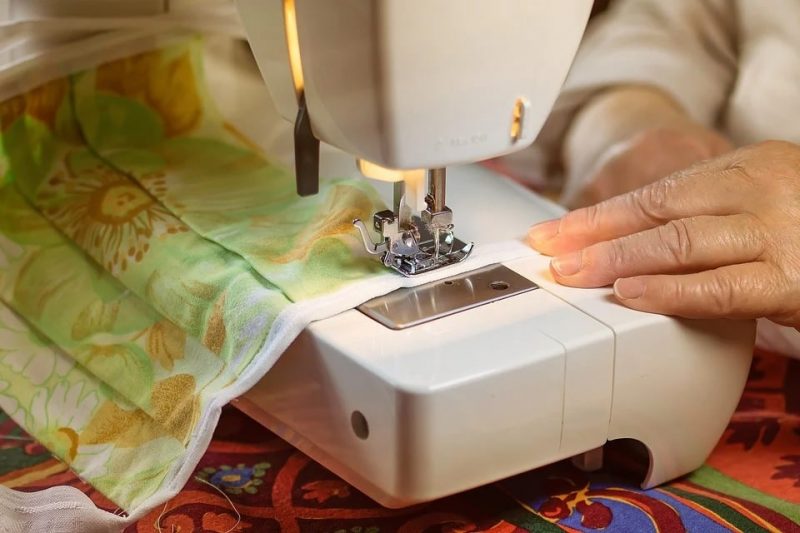If you’re interested to learn how to sew a pillow sham with flanges, it only takes three steps. Don’t get scared to try adding details like flanges on a pillow sham. With the guide below, even those without much experience sewing can complete this project!
We all know that a pillow sham serves as the pillow’s decorative cover. So why bother with adding flanges? Their addition around the sham’s edge is a quick and sure way to add variety to your pillows.

How To Make A Pillow Sham With Flanges
Step #1. Design
To ensure no drawbacks, you must measure and cut your materials accordingly. Select a pillow size and allocate an allowance for the sham. In general, all bed pillows with a length of 20 inches should have their fabric piece 27 inches long.
As for the fabric width, it will depend on the pillow’s width as well. For example, a standard size pillow can use a fabric piece measuring 72 inches wide, while the larger queen size pillow should use a fabric 80 inches wide, and the king-size pillow uses a fabric 92 inches wide. These fabric dimensions are crucial to ensure that you’re getting enough material, especially for the flange around the pillow.
Another easy technique is to cut one fabric piece for the pillow’s front and two fabric pieces for the back. The dimensions will again depend on your pillow size, but to give you a quick idea, a standard size pillow should use a 28 by 32 inches front piece and two fabric pieces measuring 28 by 20 inches. Feel free to make the necessary dimension adjustments for your materials, especially if you’re making a flanged throw pillow.
Step #2. Hem
Once you have your fabric piece, you must make the hem by folding to the wrong side ¼ inches twice on both narrow ends. Stitch them into place either by hand or with a sewing machine, and then fold the fabric according to the pillow size. This means measuring each hemmed edge in and folding 20 inches for a standard size pillow, 22 inches for a queen size pillow, and 25 inches for a king-size pillow.
After folding, ensure that the right sides of the fabric are together and their raw edges are aligned forming an overlap at the back. Pin your fabric to make stitching easier and sew the edge seams with half an inch of allowance for the seam. Then, you can turn your sham right side out and finish it.
If you opt to cut three fabric pieces, you will hem the two back fabric pieces and lay them on the front fabric piece with their right sides together. Their hemmed edges should overlap at the center, and then you’ll stitch them to the front fabric piece with half an inch of the seam allowance.
Step #3. Sew
The final step is sewing the flange, and you can use a sewing machine if you prefer. This way, you can ensure that you’ll end up with a flanged edge measuring 3 inches. Pin the overlapping flaps at the back and topstitch them from the edge 3 inches away, and you’re done.
Another way to add the flange is by turning the sham right side out and pinning the outside edges. Then, sew around the pillow sham with a seam allowance of three inches. A useful tip is to start and end at the center of the sham’s bottom edge to hide the backstitching.
Since you made an overlapping opening, you can quickly remove or replace your pillow’s flanged sham. This is always an ideal closure style for flanged pillows because the flaps are hidden at the back. Furthermore, your pillow is well-protected since the fabric pieces are overlapping.
Types Of Materials For Pillow Shams
When learning how to sew a pillow sham with flanges, you want to select your project’s best material. Choosing the fabric for your sham will depend on the pillow type you’re making. For example, throw pillows should have the right pattern, design, or color for your room, bed, or couch.
On the other hand, bed pillows should have shams that are easy to wash and comfortable against the skin. You have two primary materials, which are natural fabrics and synthetic fabrics. The former include cotton, wool, silk, and linen, while the latter are polyester and nylon.
How much fabric do you need for a sham?
Allocating the amount of material you’ll need is crucial to ensure that you’ll have enough for your sham. To give you a quick guide, a knife-edge sham will use one and a half yards of fabric, while a Euro sham needs two yards. Having details like flanges will need two yards, while ruffled and corded shams will require an additional one and a half yards for the ruffles and half a yard for the cords beside the amount for a knife-edge sham.
Conclusion
Flanges are an excellent way to add details to your bed pillows and throw pillows. Therefore, it’s always useful to learn how to sew a pillow sham with flanges so that you can experiment with different materials for the flanged cover. You can do this project by hand, but some find sewing the flange easier with a sewing machine to achieve the perfect 3-inch flanged look.
Start by cutting the fabric piece or pieces according to your pillow size. Then, you want to hem the edges, especially the overlapping back fabric pieces. Finally, sew the flange with your preferred method, and that’s it!
